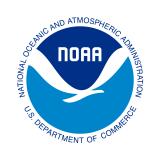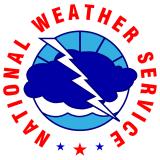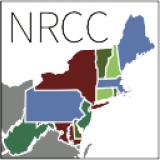Drought Has Intensified, and Impacts Are Widespread
Key Points
- Drought conditions continued to worsen over the past few weeks, particularly across Maine, New Hampshire, Vermont, and eastern New York, where Severe to Extreme Drought (D2-D3) is present. Drought also expanded in other areas of New York and Massachusetts, as well as Rhode Island. Some areas experienced a three- or four-class degradation on the U.S. Drought Monitor map over the past five weeks.
- Impacts are mounting. The combination of a wet spring followed by a dry summer presented significant challenges for the region’s agriculture, and producers anticipate losses. Some locations are experiencing historically low streamflow and groundwater, causing water supply issues.
- While some areas recently received localized precipitation, it was not enough to significantly improve drought conditions or lessen the impacts. Outlooks indicate drought is likely to persist at least through the end of September, with above-normal wildland fire potential expected across Maine, New Hampshire, and Vermont.
This update is based on data available as of Thursday, September 11, 2025 at 10:00 a.m. ET. We acknowledge that conditions are evolving.
The U.S. Drought Monitor depicts the location and intensity of drought across the country using 5 classifications: Abnormally Dry (D0), showing areas that may be going into or are coming out of drought, and four levels of drought (D1–D4).
The U.S. Drought Monitor is a joint effort of the National Drought Mitigation Center, U.S. Department of Agriculture, and National Oceanic and Atmospheric Administration.
A drought index combines multiple drought indicators (e.g., precipitation, temperature, soil moisture) to depict drought conditions. For some products, like the U.S. Drought Monitor, authors combine their analysis of drought indicators with input from local observers. Other drought indices, like the Standardized Precipitation Index (SPI), use an objective calculation to describe the severity, location, timing, and/or duration of drought.
Learn MorePeriods of drought can lead to inadequate water supply, threatening the health, safety, and welfare of communities. Streamflow, groundwater, reservoir, and snowpack data are key to monitoring and forecasting water supply.
Learn MoreDrought can reduce the water availability and water quality necessary for productive farms, ranches, and grazing lands, resulting in significant negative direct and indirect economic impacts to the agricultural sector. Monitoring agricultural drought typically focuses on examining levels of precipitation, evaporative demand, soil moisture, and surface/groundwater quantity and quality.
Learn MoreU.S. Drought Monitor
D0 - Abnormally Dry
Abnormally Dry (D0) indicates a region that is going into or coming out of drought, according to the U.S. Drought Monitor. View typical impacts by state.
D1 – Moderate Drought
Moderate Drought (D1) is the first of four drought categories (D1–D4), according to the U.S. Drought Monitor. View typical impacts by state.
D2 – Severe Drought
Severe Drought (D2) is the second of four drought categories (D1–D4), according to the U.S. Drought Monitor. View typical impacts by state.
D3 – Extreme Drought
Extreme Drought (D3) is the third of four drought categories (D1–D4), according to the U.S. Drought Monitor. View typical impacts by state.
D4 – Exceptional Drought
Exceptional Drought (D4) is the most intense drought category, according to the U.S. Drought Monitor. View typical impacts by state.
The U.S. Drought Monitor depicts the location and intensity of drought across the country using 5 classifications: Abnormally Dry (D0), showing areas that may be going into or are coming out of drought, and four levels of drought (D1–D4).
The U.S. Drought Monitor is a joint effort of the National Drought Mitigation Center, U.S. Department of Agriculture, and National Oceanic and Atmospheric Administration.
This U.S. Drought Monitor and change maps are released every Thursday morning, with data valid through Tuesday at 7 a.m. EST.
A drought index combines multiple drought indicators (e.g., precipitation, temperature, soil moisture) to depict drought conditions. For some products, like the U.S. Drought Monitor, authors combine their analysis of drought indicators with input from local observers. Other drought indices, like the Standardized Precipitation Index (SPI), use an objective calculation to describe the severity, location, timing, and/or duration of drought.
Learn MorePeriods of drought can lead to inadequate water supply, threatening the health, safety, and welfare of communities. Streamflow, groundwater, reservoir, and snowpack data are key to monitoring and forecasting water supply.
Learn MoreDrought can reduce the water availability and water quality necessary for productive farms, ranches, and grazing lands, resulting in significant negative direct and indirect economic impacts to the agricultural sector. Monitoring agricultural drought typically focuses on examining levels of precipitation, evaporative demand, soil moisture, and surface/groundwater quantity and quality.
Learn MoreCurrent Conditions and Impacts in the Northeast
- Dry conditions continued through the end of summer.
- August was extremely dry, with some areas receiving less than 25% of normal precipitation. A large portion of the region received less than 50% of normal precipitation from June-August.
- Multiple locations, particularly in northern New England, had their driest summer and/or driest August on record. The North Conway, New Hampshire Cooperative Observer (COOP) station had its driest August with 0.19 inch of precipitation, obliterating the previous record of 1.16 inches set in 1984 (period of record 1959-present).
- 100% of Vermont is in drought, and Extreme Drought (D3) was introduced to New Hampshire—for the first and the fourth time since the U.S. Drought Monitor began, respectively. Since mid-August, Severe Drought (D2) spread from coastal Maine westward throughout central and southern Maine, northern and central New Hampshire, northeastern and central Vermont, and into northeastern New York. Moderate Drought (D1) developed further across New York and New England, except for Connecticut, which remained drought-free.
- As streamflows and groundwater levels continued to decline, drought began impacting lake levels and water quality.
- Record-low lake levels were observed in New Hampshire, causing critically low flows downstream and endangering water supplies.
- In Vermont, Lake Champlain water levels were near record low, and the presence of algal blooms in some lakes created unsafe swimming conditions.
- Agriculture and other vegetation across the region continue to be impacted.
- In general, yield loss is expected in drought regions where irrigation was not used.
- Livestock producers are supplementing feed due to dry and dormant pastures. Getting adequate and high-quality cuttings of hay has been challenging.
- Wildfire activity continues to be a concern across parts of the Northeast.
- According to the Maine Forest Service, the state has already exceeded its annual average number of wildfires, with the fall season still to go. It also stated that drought-stressed vegetation promoted more active fire behavior, such as active fire growth at night and fires burning deep into the ground.
- Maine and Vermont recently activated their Drought Task Forces, and the New York State Department of Environmental Conservation issued a Drought Watch for the majority of the state.
Increasing Drought Impacts

Record-Breaking Dryness During the Summer

Streamflow and Groundwater Levels Continue to Plummet

Outlooks and Potential Impacts for the Northeast
- The Climate Prediction Center’s 8-14 day outlook favors above-normal temperatures for the Northeast. Below-normal precipitation is favored across most of Maine and northeastern New Hampshire, with near-normal precipitation favored elsewhere. The three-month outlook for September-November favors above-normal temperatures and equal chances of above-, below-, and near-normal precipitation for the entire region.
- According to the National Interagency Fire Center, above-normal risk for significant wildland fires is expected for Maine, New Hampshire, and Vermont in September. Confidence in the outlooks beyond September is low at this time. Leaf drop, caused by a combination of drought-stressed trees and the fall season being underway, will increase fuel load in forests, further raising fire danger.
- Impacts to agriculture, particularly reduced yields, are anticipated.
- In some areas of Vermont, corn will not recover.
- Producers worry that the potato harvest may be impacted in northern Maine, despite this region not experiencing conditions as severe as the southern part of the state.
- In New Hampshire, Vermont, and Maine, fruit yields are a big concern as “u-pick” and the prime apple harvest season approaches.
- Streamflows and groundwater levels may continue to drop with ongoing dry conditions. Follow local officials for information on water restrictions, conservation measures, and water quality alerts.
- Increased reports of leaf drop indicate that fall color and recreational leaf peeping may be negatively impacted this fall.
8-14 Day Outlook Favors Warm Conditions and Variable Precipitation

Above-Normal Wildland Fire Potential Expected in September

Additional Resources
- Northeast DEWS Dashboard
- Weekly Northeast Drought Update from the Northeast Regional Climate Center
- The next Northeast Regional Climate Center monthly webinar is Tuesday, September 30 at 9:30 a.m. ET. Register.
- Connecticut Drought Information Center
- Maine Drought Task Force Dry Well Survey
- Massachusetts Drought Status
- New Hampshire Department of Environmental Services Drought Webpage
- New York Department of Environmental Conservation Current Drought Conditions
- Rhode Island State Climate Office Weekly Drought Discussion
- Rhode Island Water Resources Board Drought Monitoring Dashboard
- Vermont Agency of Natural Resources Current Fire Danger Forecast
- Vermont Department of Health Cyanobacteria (Blue-Green Algae) Tracker
- Vermont Drinking Water Drought Reporter
- View or submit Condition Monitoring Observer Reports (CMOR)
- The U.S. Drought Monitor triggers eligibility for the USDA Livestock Forage Disaster Program. Find your local service center to connect with a Farm Service Agency representative if you are a producer impacted by drought.
Prepared By
Crystal Stiles
Cooperative Institute for Research in Environmental Sciences (CIRES) at the University of Colorado Boulder | NOAA National Integrated Drought Information System (NIDIS)
Samantha Borisoff, Art DeGaetano, Keith Eggleston, Jessica Spaccio, and Natalie Umphlett
Northeast Regional Climate Center
This Drought Status Update is issued in partnership between the National Oceanic and Atmospheric Administration (NOAA), the Northeast Regional Climate Center, the U.S. Geological Survey, and state climatologists to communicate a potential area of concern for drought expansion and/or development within the Northeast region based on recent conditions and the upcoming forecast.
A special thank you to the state climate offices, state partners, and National Weather Service offices in the Northeast region for providing local information on drought conditions and impacts included in this Drought Status Update.
NIDIS and its partners will issue future Drought Status Updates as conditions evolve.







